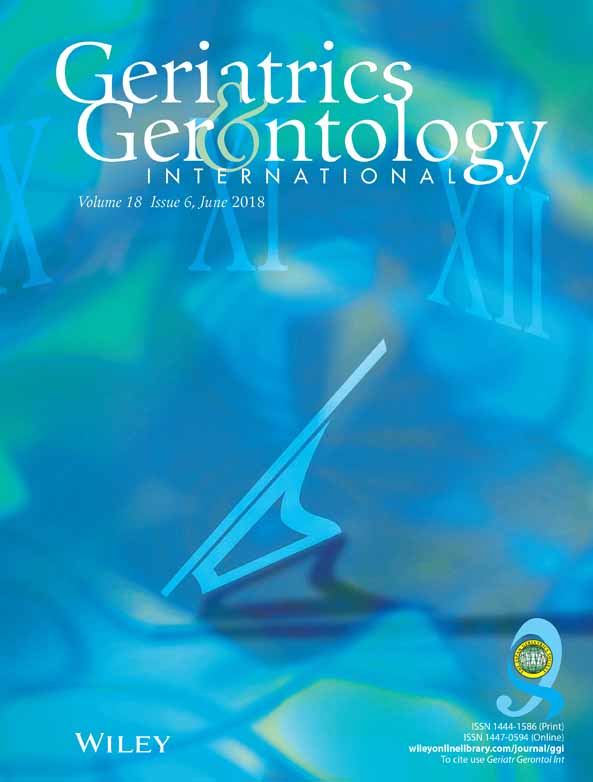Living alone is associated with an increased risk of institutionalization in older men: A follow-up study in Hamanaka Town of Hokkaido, Japan
Abstract
Aim
In order to clarify the risks of institutionalization or mortality among older adults living alone compared with those not living alone, we carried out a prospective study on older adults in Hamanaka Town in the far eastern part of Hokkaido, Japan.
Methods
All 978 community-dwelling residents aged 70–85 years in the town were chosen as study candidates between February and May of 2014. Written informed consent was obtained from 562 residents (57.5%), and a self-administered questionnaire, including a question about living arrangements, was mailed to them. They returned the completed questionnaire to us in 2014. A follow-up survey was carried out with a questionnaire mailed to each participant about institutionalization and mortality, three times, in February of 2015 and 2016, and in April of 2017. Hazard ratios and 95% confidence intervals were calculated with the Cox proportional hazards model.
Results
Living alone was significantly associated with an increased risk of institutionalization in the male participants, after adjusting for age, sex and having daily support from family around a participant (hazard ratio 5.71, 95% confidence interval 1.17–27.83), although it was not significant in the total participants or the female participants. Additional adjustments for a history of having common diseases did not change the results meaningfully. Living alone was not associated with the risk of mortality in the total participants, the male participants or the female participants.
Conclusions
Poor social support in social networks for older men living alone may be etiologically associated with increased risk of institutionalization in rural area. Further study with a larger sample size is necessary to confirm this finding. Geriatr Gerontol Int 2018; 18: 867–872




